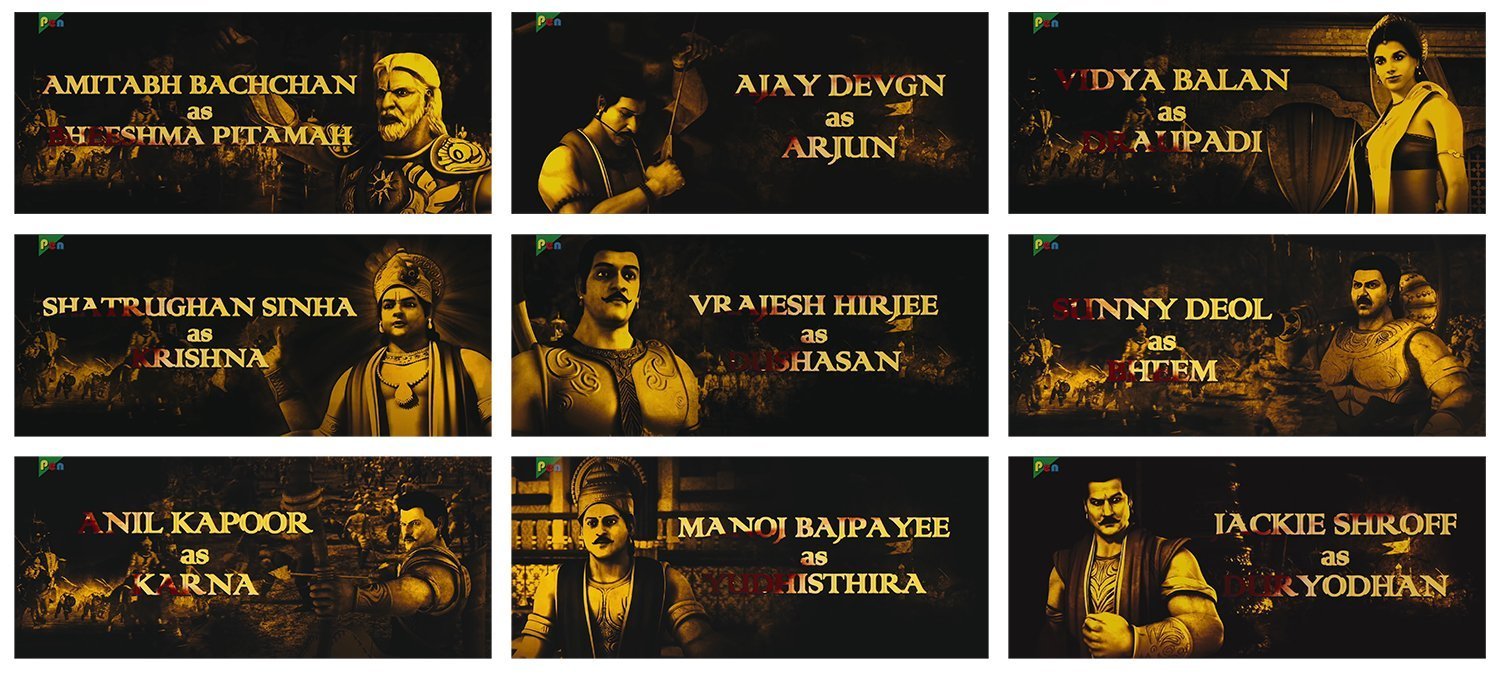Hinduism’s Mahabharata
At over 100,000 verses, and close to two million words, the Mahabharata is ten times the size of both Homer’s The Iliad and The Odyssey combined, and six times the length of the Christian Bible. In the canon of epic poetry, it is perhaps the most epic of epics. Vast in scope, the Mahabharata admits that ‘whatever is here may be found elsewhere, but what is not here is nowhere else’(1.56.34 in Davis, 1999), and depicts the struggle and conflict between two great rival cousin clans, the Kauravas and the Pandavas. Originating, as with much of the Vedic tradition, as oral literature, and told and retold primarily as allegorical, instructional parable for ksatriya warriors, the story was embellished and enhanced over several centuries, and reached its final form around the fourth century CE.
As Davis explains, the Mahabharata “uses the rivalry between two ksatriya clans to characterize the entire warrior class as quarreling, contentious, and increasingly deviating from dharma. With the ruling classes in such disarray, disorder and violence threaten society itself’ (Davis, 1999). But through the guidance of earthly avatars, in particular Krishna and Visnu, such demonic swirling forces of discord are overcome, moksha can be achieved, and the path of a righteous ethical, eudaimonic life laid out to follow.
The Mahabharata contains many of the narrative devices we’re still familiar with today. Betrayal, marriage, exile, war, inter-generational and inter-familial conflict, and the guiding hand of the supernatural and spiritual as moral compass for our earthly heroes. In particular, the ‘Song of the Lord Krishna’, the Bhagavad Gita, which appears at the dramatic climax of the epic’s narrative, provides the central ideological and theological vision of the Mahabharata, where Krishna reflects upon Pandavan prince Arjun’s doubts about the impending battle by ‘offering a sustained discourse on the moral and religious propriety of war, the nature of human action, and the most effective means of attaining liberation, or moksha’ (Davis, 1999).
Ultimately Krishna advocates for one’s personal dharma to guide one’s appropriately good conduct in the world, and does so by increasingly revealing his true form. From the charioteer, uncle figure, we’ve been familiar with throughout the epic, into the highest, supreme divinity. And here he instructs Arjun that the most effective way to achieve liberation from samsara is to dedicate one’s life to the ways of the absolute, to Krishna himself. A set of Hindu ethics emerges from the story which outlines the difference between good and bad, propriety and impropriety, and how we learn from the mistakes of the protagonists to avoid such evils ourselves. The Mahabharata becomes a guiding map, a set of principles told through epic poetry, for a relationship with dharma.
As with any great mythological epic, the Mahabharata, despite its length, has specific set scenes and interactions which surface as more memorable than others, similar to how we might think of the brief, but highly memorable encounter with Polyphemous in The Odyssey, or the entrance into Troy of the wooden horse in The Iliad. The Mahabharata has them in abundance, from the marriage of Draupadi, to the (loaded) dice game, the exile and return of the Pandava brothers to the colossal Battle of Kurukshetra. Over the years there have been many depictions of these events, and attempts to capture the epic nature of the Mahabharata. I decided to spend time with three of them. The 1965 movie depiction, the first ten episodes of the 2013 television series, and the 2013 animated children’s movie.
All of them follow to a greater extent the same order of events, from the burning of the Pandava brothers’ house to the wonderful archery sequence where Drapaudi’s suitors attempt to fire an arrow through the eye of a fish suspended on the ceiling of the palace’s great hall. And as you’d expect from the two Bollywood movies, the dance sequences are exquisite and a sheer joy. The climax of the Battle of Kurukshetra, and Krishna’s revelation are treated with spectacular effect, the 1965 version being particularly impressive for its time, and I’ve included some stills from this sequence above. As with most modern television serializations, the 2013 series is beautiful, but slow, with soap-opera-esque cliff hangers in abundance. The set and costume design are exquisite, and it’s not hard to see why the Mahabharata continues to be one of the most watched stories in the world, greater even than The Olympics or The Super Bowl. The 2013 animated children’s version, which holds the record for India’s most expensive animated film at $6.3 million, is primitive in execution, even for 2013, but naturally has the creative latitude to be able to depict the more supernatural elements of the story free from the constraints of having to film them for real as in the 1965 version.
But with all three versions, and of course there are many more, the sheer epic scale, the twists and turns of the story, the universality of the struggle between generations and family, and the importance of the guiding hand of the divine have proven not only enduring, but also inspiring. We see these themes continue to be echoed in our modern western epics from Marvel, Game of Thrones, Star Wars and The Lord of the Rings. Stories everywhere, but especially in Hinduism, are how we make sense of the world. They’re where we get our ethics of right and wrong, of good and bad, and perhaps most importantly, of what the path forward should be. What we gain in religious lesson from the Mahabharata has been durable over thousands of years, and while depictions of the story will come and go, especially as the technological means of telling them evolves at ever-increasing pace, what endures is the story, what we learn from it, and what it tells us to pass on to the next generation.
Latest Articles








































